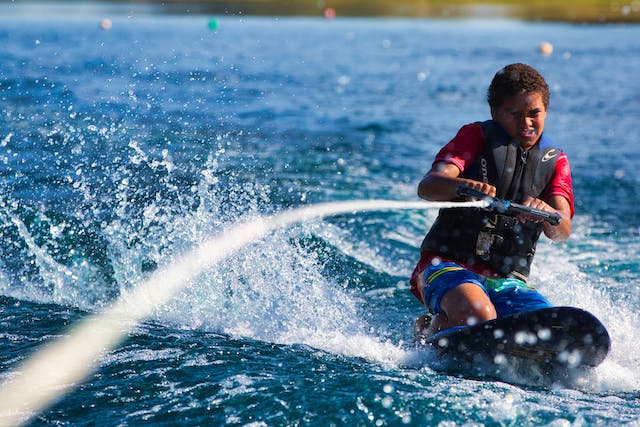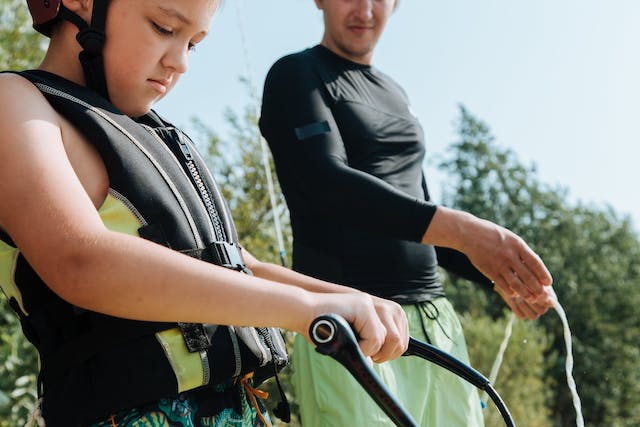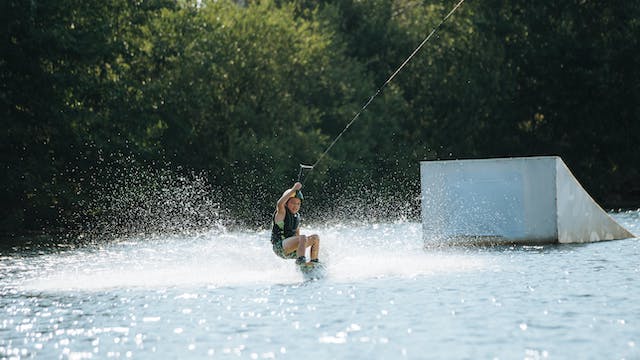A Guide to Life Jacket Safety
Life Jacket Safety Guide
When participating in water activities such as boating or swimming, safety should be paramount, and wearing a life jacket is the best practice. With various options available, including neoprene vests and foam-insulated ones, selecting the right one for your child can be overwhelming. The fit and functionality are key considerations when choosing a life jacket. The vest should stay securely fitted around the torso without riding up towards the ears. In the next section, we'll provide safety tips for selecting the most suitable life jacket for you and your children.

Different Types of Life Jackets
With many brands, styles, and life vest types available today, the first step is to make sure that your Personal Flotation Device (PFD) is approved by the U.S. Coast Guard for how you plan to use it. Ensuring this approval guarantees the use of a safe device that will keep your children secure during each activity.
- Type I – It provides the best chance of survival for any unconscious person. It will position wearers so that their head is high above water for optimal breathing. This is best suited for boating, cruising, and survival in rough water conditions.
- Type II – This type of life jacket is less buoyant than type I and ill-suited for rough waters. In many cases, it will turn unconscious wearers face-up for unimpeded breathing. Can be used in calm, protected waters where immediate rescue is available.
- Type III – Type III life jackets are intended to support a conscious individual in the water in an upright position, commonly utilized in supervised activities such as water skiing, fishing, kayaking, etc. However, it's important to note that Type III jackets are not designed to rotate unconscious wearers in water and are not suitable for extended survival.
- Type IV – These devices are throwable PFDs and not meant to be worn. Most of the time, these are ring buoys or square-shaped floatation devices thrown to an overboard passenger. These are not suited for unconscious swimmers or children and should be immediately ready to use.
- Type V – Type V are known as special use life jackets and are limited to the single-use application for which it is designed (ex. deck suits, rescue vests, automatic inflation models, etc.). These models must be used for their distinct applications to meet minimum requirements for U.S. Coast Guard approval.

Preferences
We favor Nylon life jackets due to their rapid drying capabilities. Nylon material is known for its ability to quickly shed water and moisture, ensuring that the life jacket dries swiftly after exposure to water. This feature is particularly advantageous for individuals engaging in water activities where they may get wet frequently.

Important Life Jacket Safety Tips
Before heading into the water with a life jacket, it's essential to always keep these crucial safety tips in mind:
- Choose the Right Type – Make sure you learn which life vest type is best suited for your scenario. If you are still curious, read the listed types detailed above.
- Ensure the Proper Size – One of the most important things in relation to wearing a life jacket is to make sure it’s the right size for the wearer. A good fit is snug, comfortable, and adjustable. Making a trip to the specialty store would be beneficial to ensure proper fit before making a purchase.
- Consistent Quality Checks – Life vests should be checked yearly to ensure there are no holes, all buckles work properly, and the buoyancy is consistently sufficient.
- Secure Buckles & Loose Straps – Most Type I life jackets include buckles & straps. Always ensure that buckles are secured (but not too tight) and loose straps are tucked in.
- Make Sure to Wear it! – Life jackets only work if you wear them, and always make sure there are enough jackets for everyone (especially young children).

Water activities, such as hanging out at a pool, beach vacations, or boating on a lake, are among everyone’s favorites things to do, especially during the summer! Ensuring safety is essential for continuous enjoyment. Even if your children are proficient swimmers, life jackets offer an additional layer of protection during unpredictable water activities. Understanding when do you need a life jacket, the usage of different life vests and following life jacket safety is critical when making a purchase decision. To be better prepared, consider enrolling your child in swim lessons at your closest Big Blue Location for expert guidance.